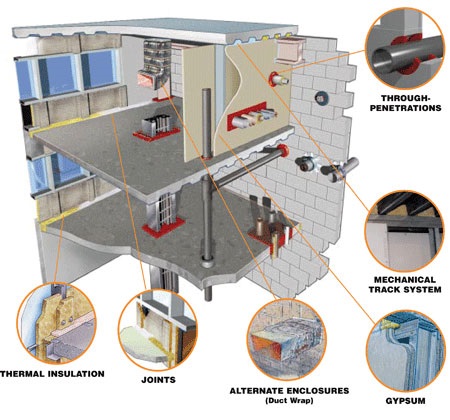What is Passive Fire Protection?
Passive fire protection is a barrier or shield, stopping the spread of fire from one area to another.
Unlike active fire protection products such as sprinkler systems, fire alarms, fire extinguishers & fire hoses which become active in the event of fire, passive fire products remain non-active. An example of passive fire is a “Firewall” or “Fire-Cell”. This is a fire rated barrier or room, usually with a specific time allocated to fire containment. It is designed to perform that exact task: contain the fire from spreading.

As part of this fire-rated room, there will be various forms of penetrations, from door openings, windows, power points, switches, lighting, HVAC, plumbing…………the list goes on. All of these compromise the fire integrity of the room. These penetrations need to be filled with passive fire products, such as fire doors & glass both with suitable fire rated frames and hardware. Power points, lights, and switches are also required to be suitably fire rated.
Dangerous concerns in New Zealand!
The area most overlooked is the pipe and cable penetrations associated with the supply of power, data, water & waste-water. As most of these are hidden in cabinets and in ceiling voids, it is vital these penetration seals are installed correctly with the appropriate products sustaining the life of the building. Pipes and cables will burn and melt in a fire leaving a hole that creates a chimney effect, causing fire and smoke to spread rapidly to the next room.
If these penetrations are not sealed correctly, buildings, property and assets will be destroyed. But more importantly, people may die!
For a more detailed Guide to Passive Fire see the BRANZ publication Guide to Passive Fire Protection in Buildings or download from our Technical page.